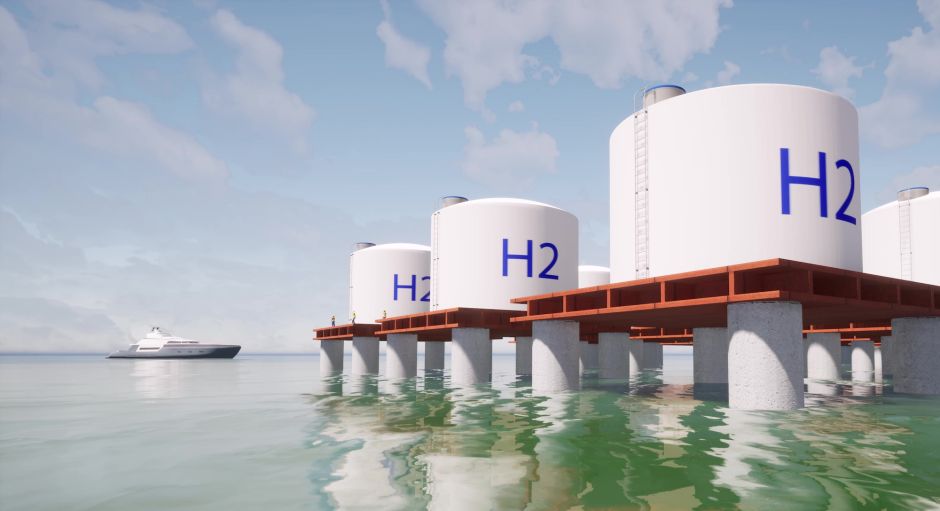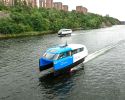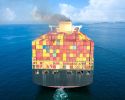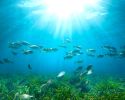Researchers help Umeå Port become a green energy hub

In a major knowledge-building study, researchers from IVL have mapped out the conditions for Swedish ports to offer fossil-free bunker fuels and electric charging. Additionally, they have examined the possibilities for large-scale production of hydrogen and methanol in northern Sweden. Now, a strategy is being developed for how Umeå and its port can become a green energy hub.
What is required for ports to offer hydrogen-based fuels and electric solutions for ships? Which stakeholders are involved and play a crucial role in the implementation?
As part of the Blue Supply Chains project, funded by Interreg Baltic Sea Region and partly by the Swedish Transport Administration, researchers from IVL have conducted an in-depth analysis of these questions, resulting in an extensive report and knowledge base. Both fuels and charging infrastructure are described in detail — covering everything from fuel maturity and regulatory frameworks to infrastructure, storage issues, and economic, environmental, and safety aspects. The perspectives of stakeholders are also discussed. In addition to ports, shipowners, terminal operators, energy companies, technology providers, and authorities are involved. Based on the newfound knowledge, the researchers have developed a methodology for creating a strategy for bunkering and charging in ports.
So how is this best tested? Through a suitable case study, of course. In this case, it concerns Umeå and its potential for large-scale hydrogen and methanol production. The city has a favorable location for this purpose. The production of green hydrogen requires large amounts of renewable energy, biogenic carbon dioxide, and clean water, making northern Sweden an ideal region.
"We already know how maritime activities look in Umeå today — the type of port calls, types of ships, age structure, shipowners, and how much energy is used in the port. The next step, happening this fall, is to apply the model to Umeå and develop a roadmap for how the region and city can move toward producing renewable fuels that can also benefit the shipping industry," says Linda Styhre from IVL, who has led the project.
She describes it as an exciting task. Umeå’s commitment to realizing the vision of a fossil-free city is strong.
"Umeå Energy, for example, is a small company looking at the possibility of starting production of both hydrogen and methanol. They want to use CCS technology to capture carbon dioxide for methanol production. However, they lack the expertise and financial capacity to fund such a project. Therefore, they must follow a model where an external party initiates, brings expertise, and sells to an e-methanol producer. Collaboration between different stakeholders is essential."
She believes the knowledge base will be very useful.
"We have organized two seminars, one in Stockholm and one in Umeå, which attracted a lot of people. I think it became clear that many are unaware of what investing in new fuels entails and what business models can be used," says Linda Styhre.
So how will they concretely work on the strategy for Umeå?
"First, we need to gain better knowledge of the current situation regarding emissions, fuel needs, and demand in Umeå. Then, we need to map the future. What will the energy demand be in 2030-35? How many residents will there be? What industries? Based on that and the knowledge base we've developed, we can then carve out concrete actions to move forward," says Linda Styhre.
The future role of ports in providing fossil-free fuels is a major issue. In addition to Blue Supply Chains, IVL is also leading the sister projects H2AMN and STORM.
STORM, funded by the Swedish Transport Administration, has just started and focuses on the possibilities and limitations of different fuel types for various types of shipping, such as ferries, fishing vessels, and cargo ships in the Nordic region.
H2AMN analyzes the role that ports can play in the transition to sustainable energy systems that include hydrogen-based fuels. Since a significant portion of ship fuel bunkering around Sweden takes place at the Port of Gothenburg, they are collaborating with the port, and this part of the project is led by Julia Hansson from IVL.
"Since Gothenburg is the largest port in Scandinavia, we believe that the results from this case study will also be relevant for other Nordic ports interested in the potential of hydrogen-based energy carriers," she says.
The Swedish part of the Interreg report Role of Port Authorities in Green Energy Supply for Transport Chains was authored by Linda Styhre, Karl Jivén, Desirée Grahn, Julia Hansson, Anders Hjort, Elin Malmgren, Rasmus Parsmo, Michael Priestley, Benjamin Storm, Sara Svedberg & Mirjam Särnbratt (All from IVL Swedish Environmental Research Institute).
-
 Ny studie: Eldrivna pendelbåtar kan effektivisera Stockholms kollektivtrafik
Ny studie: Eldrivna pendelbåtar kan effektivisera Stockholms kollektivtrafik -
 Sjöfartens utsläpp ökar
Sjöfartens utsläpp ökar -
 Sociala relationer påverkar val av bränsle
Sociala relationer påverkar val av bränsle -
 Sjöfartens omställning kräver ”mjukare” påtryckningar
Sjöfartens omställning kräver ”mjukare” påtryckningar -
 Hon hade avtalad tid med Kapten ynkrygg
Hon hade avtalad tid med Kapten ynkrygg -
 Lighthouse omvärldsanalys 2025 – osäkerhet och tullar präglar sjöfarten
Lighthouse omvärldsanalys 2025 – osäkerhet och tullar präglar sjöfarten -
 Se seminariet Shipping in the Marine Environment
Se seminariet Shipping in the Marine Environment -
 Vad betyder egentligen de 90 procenten?
Vad betyder egentligen de 90 procenten? -
 Hålla där...
Hålla där... -
 Ny rapport: Klimatförändringarna ett hot mot de flesta större hamnar i världen
Ny rapport: Klimatförändringarna ett hot mot de flesta större hamnar i världen

